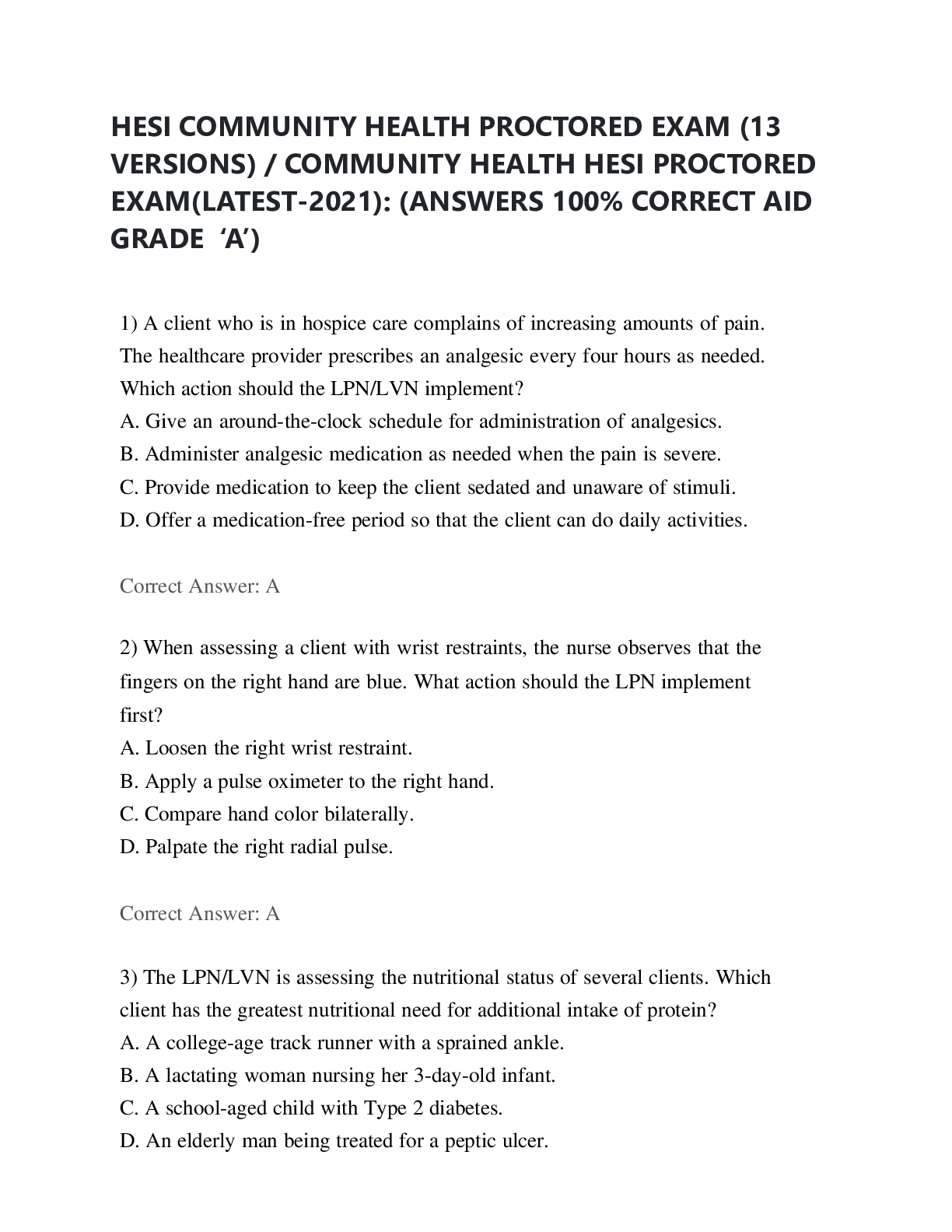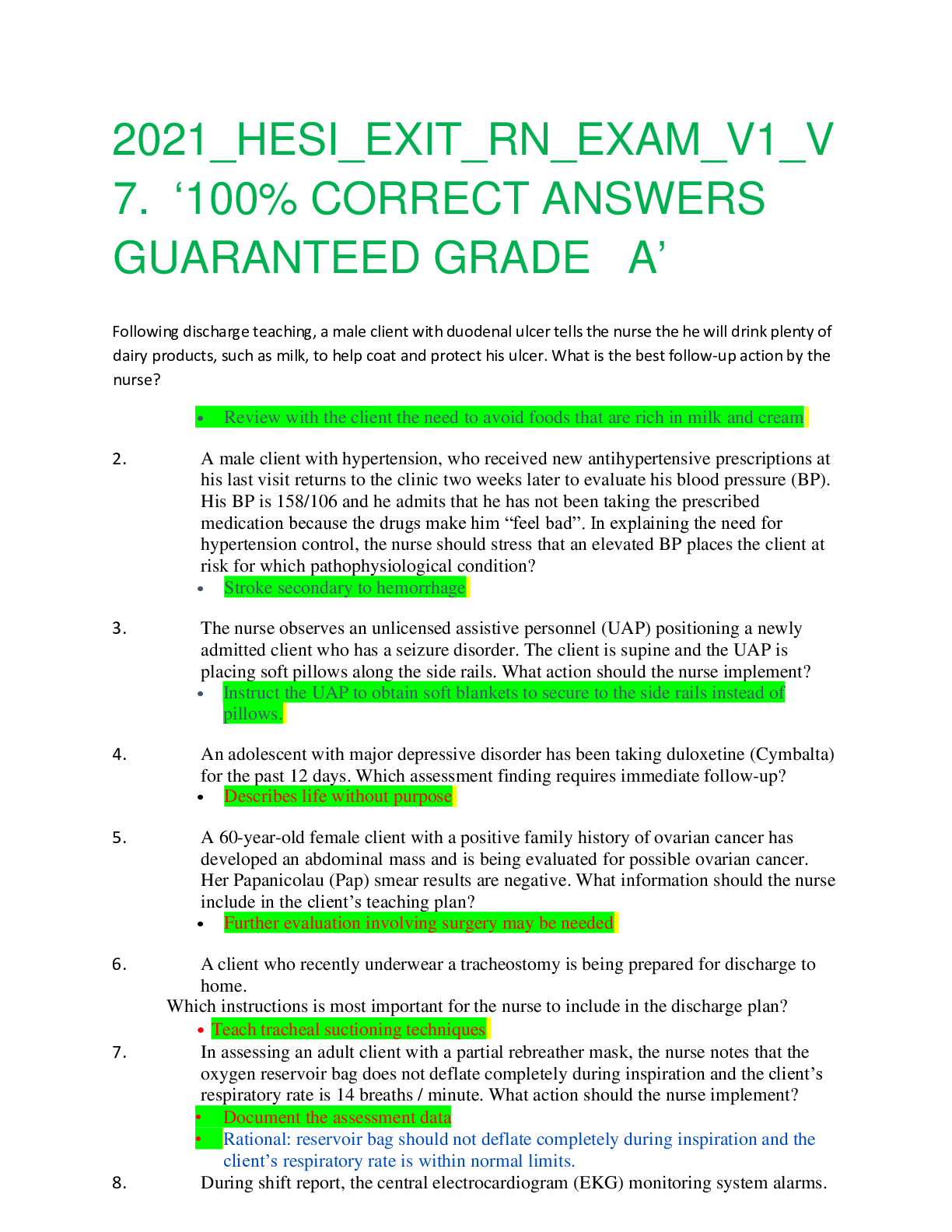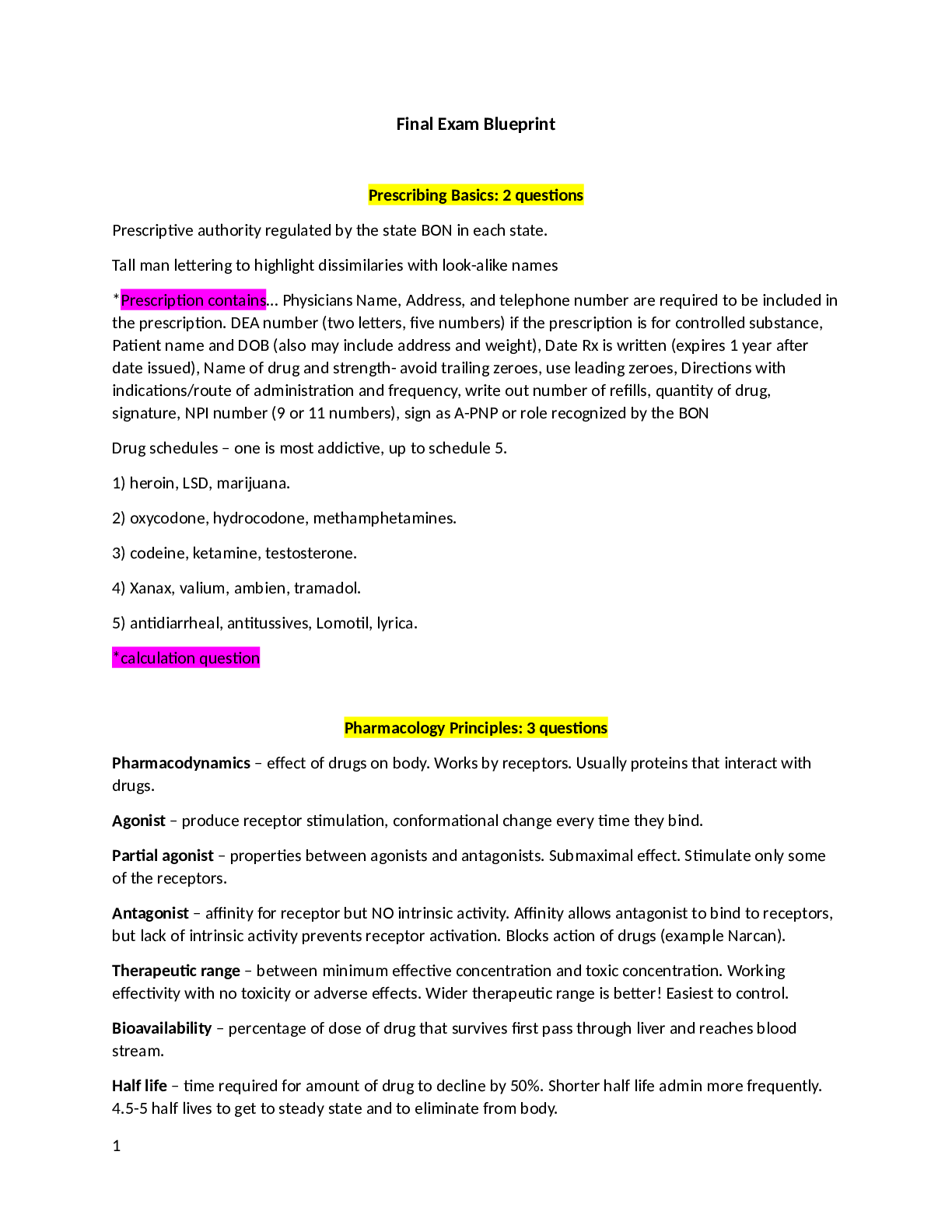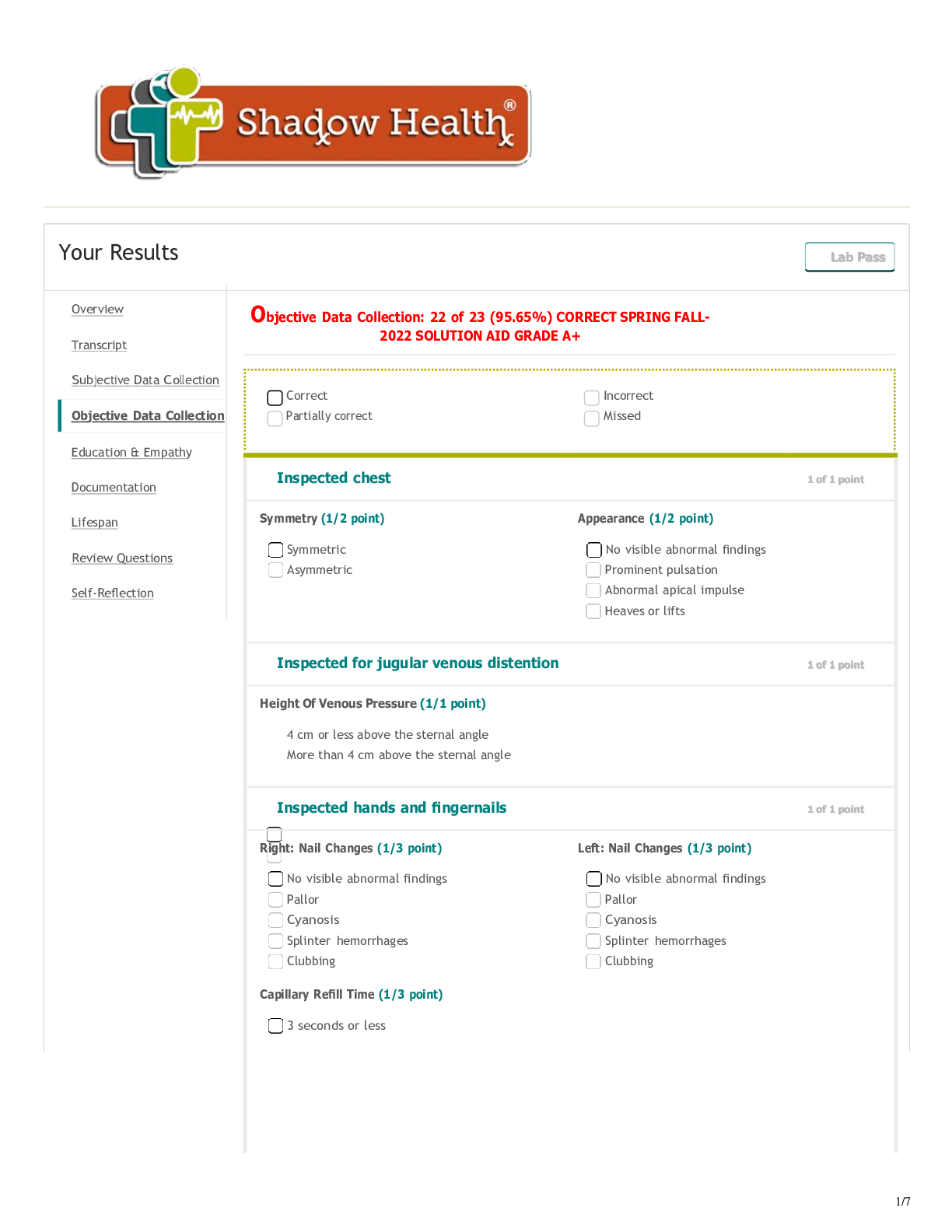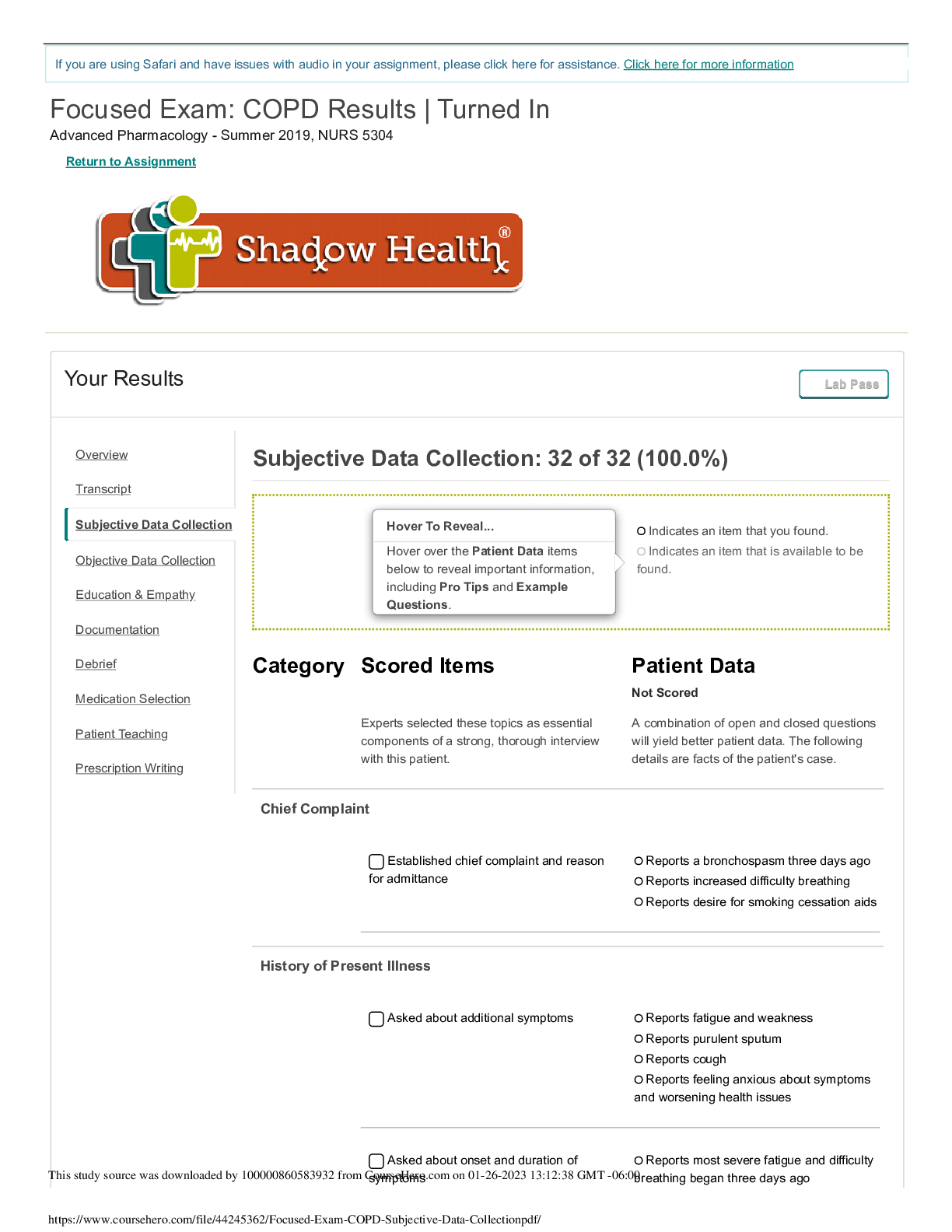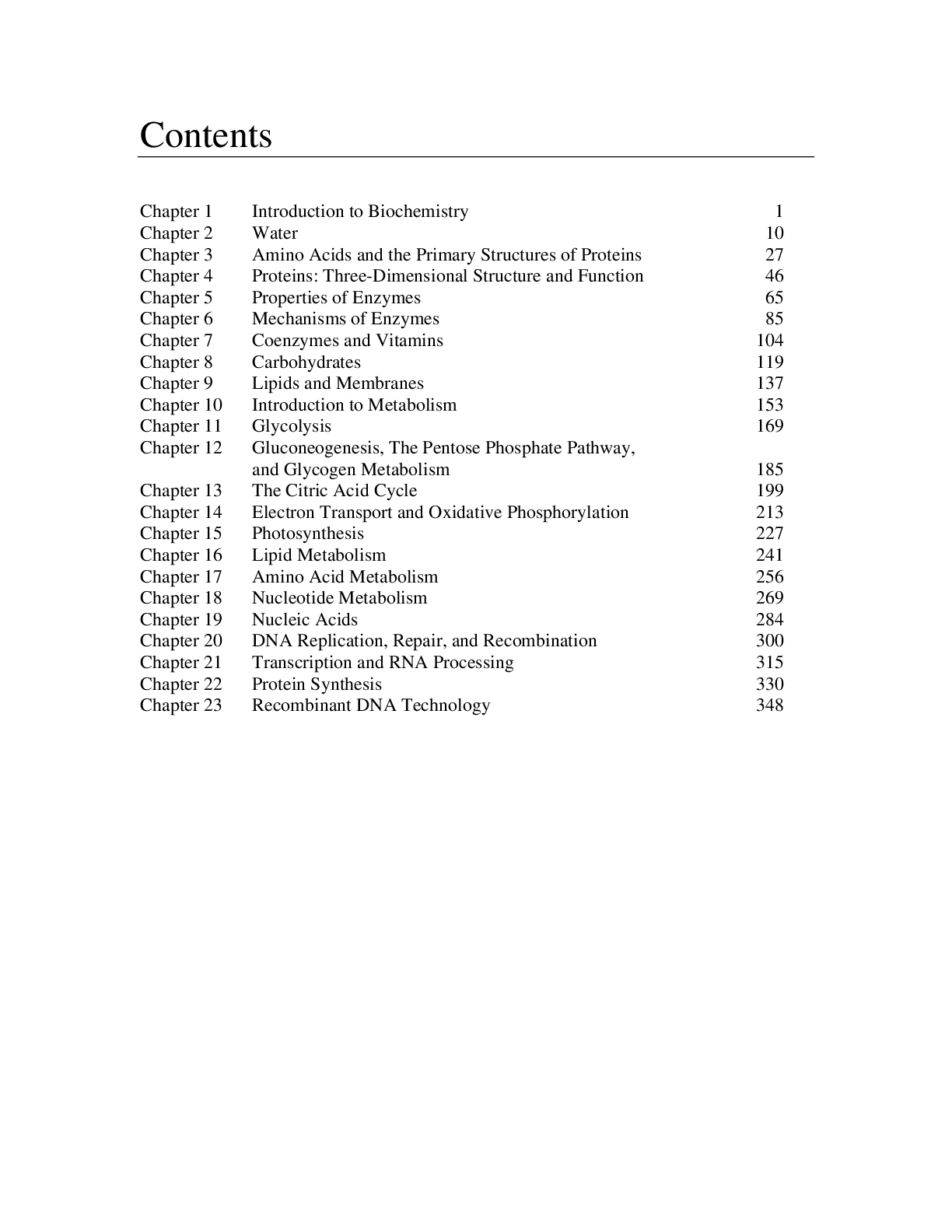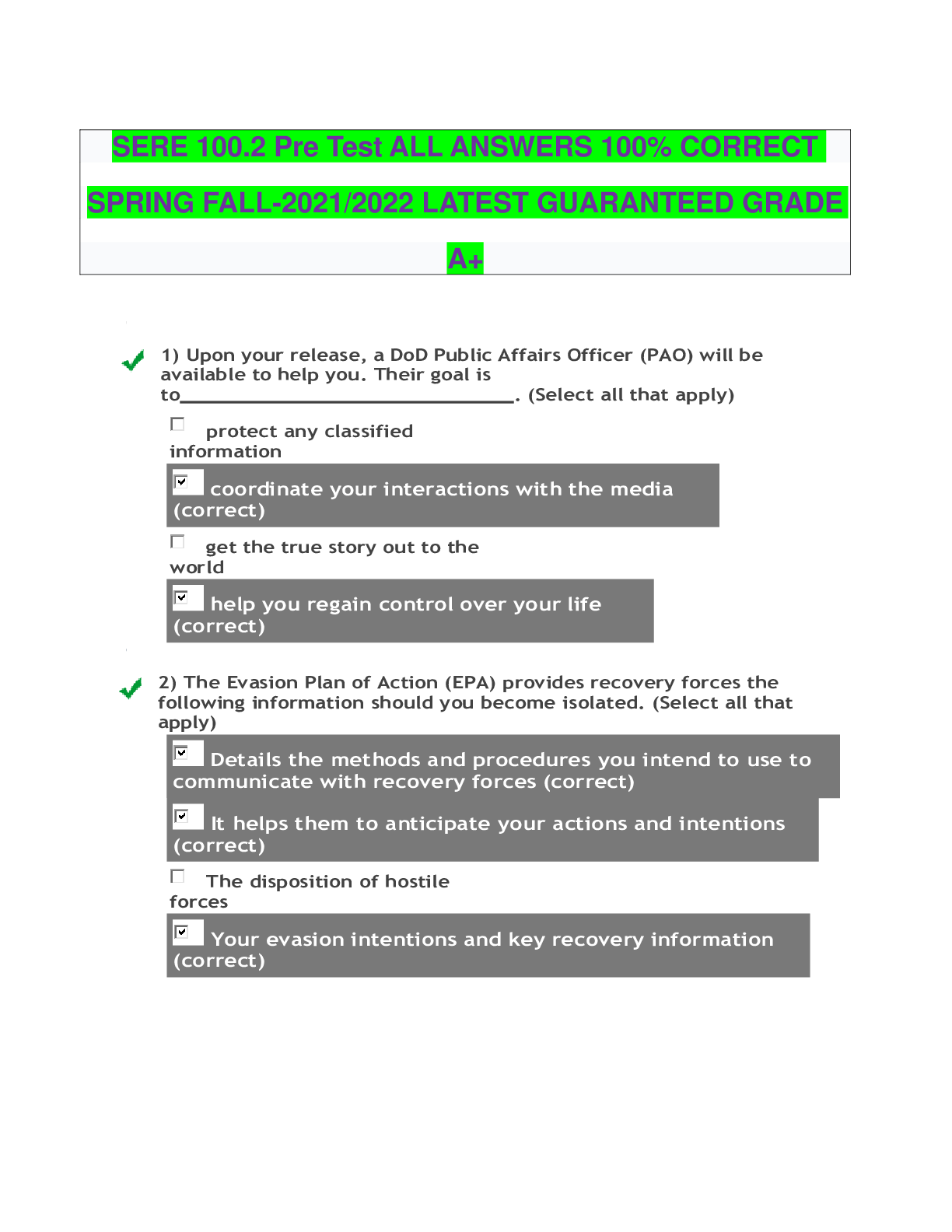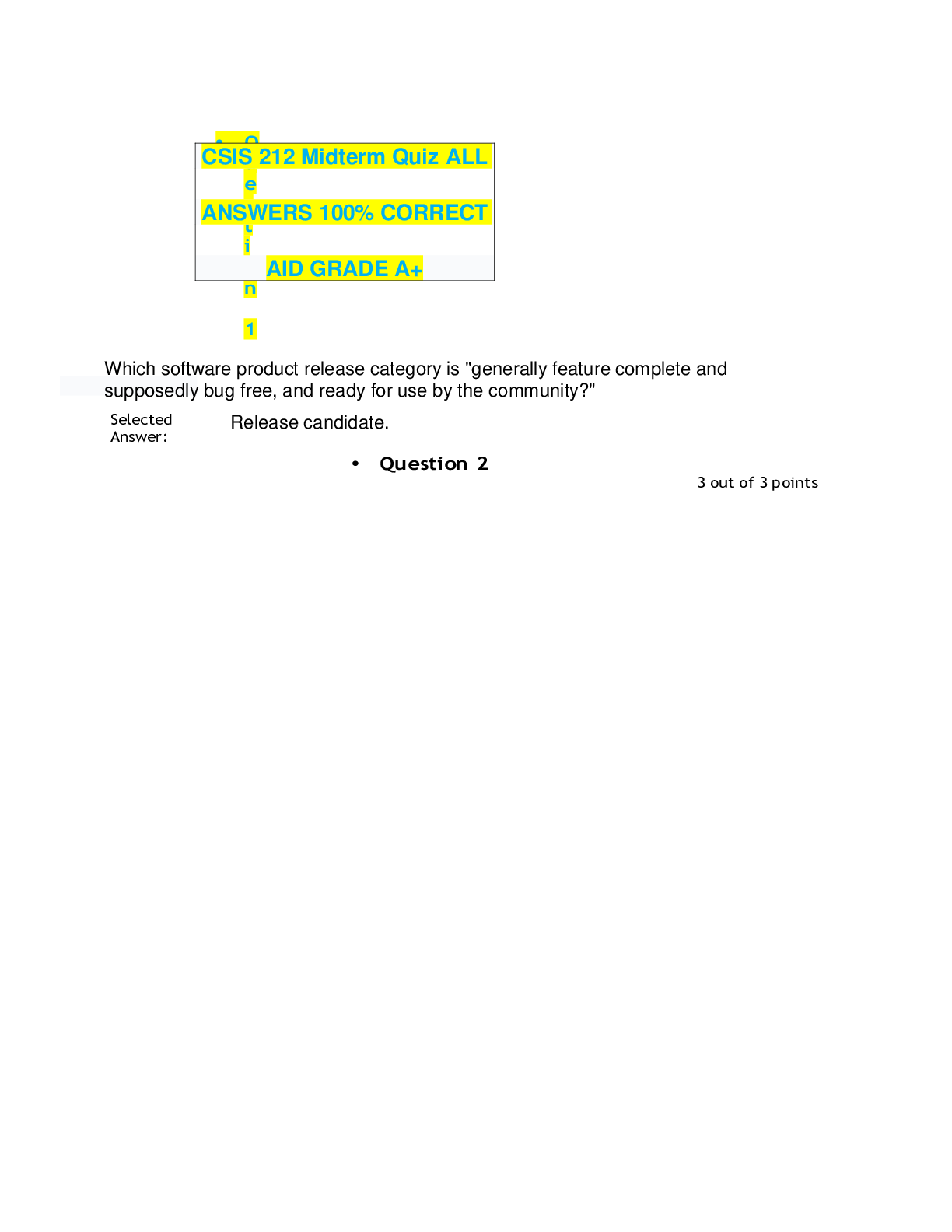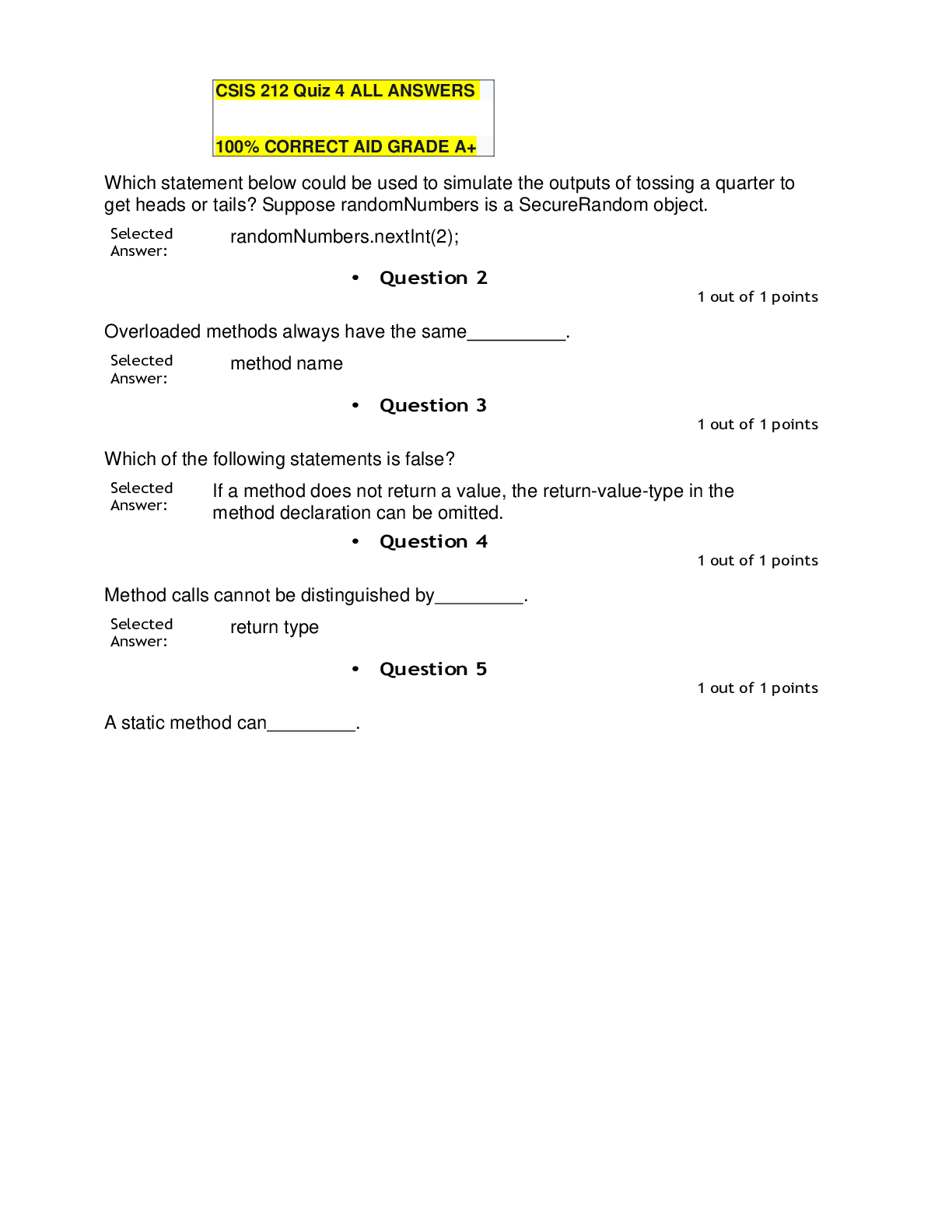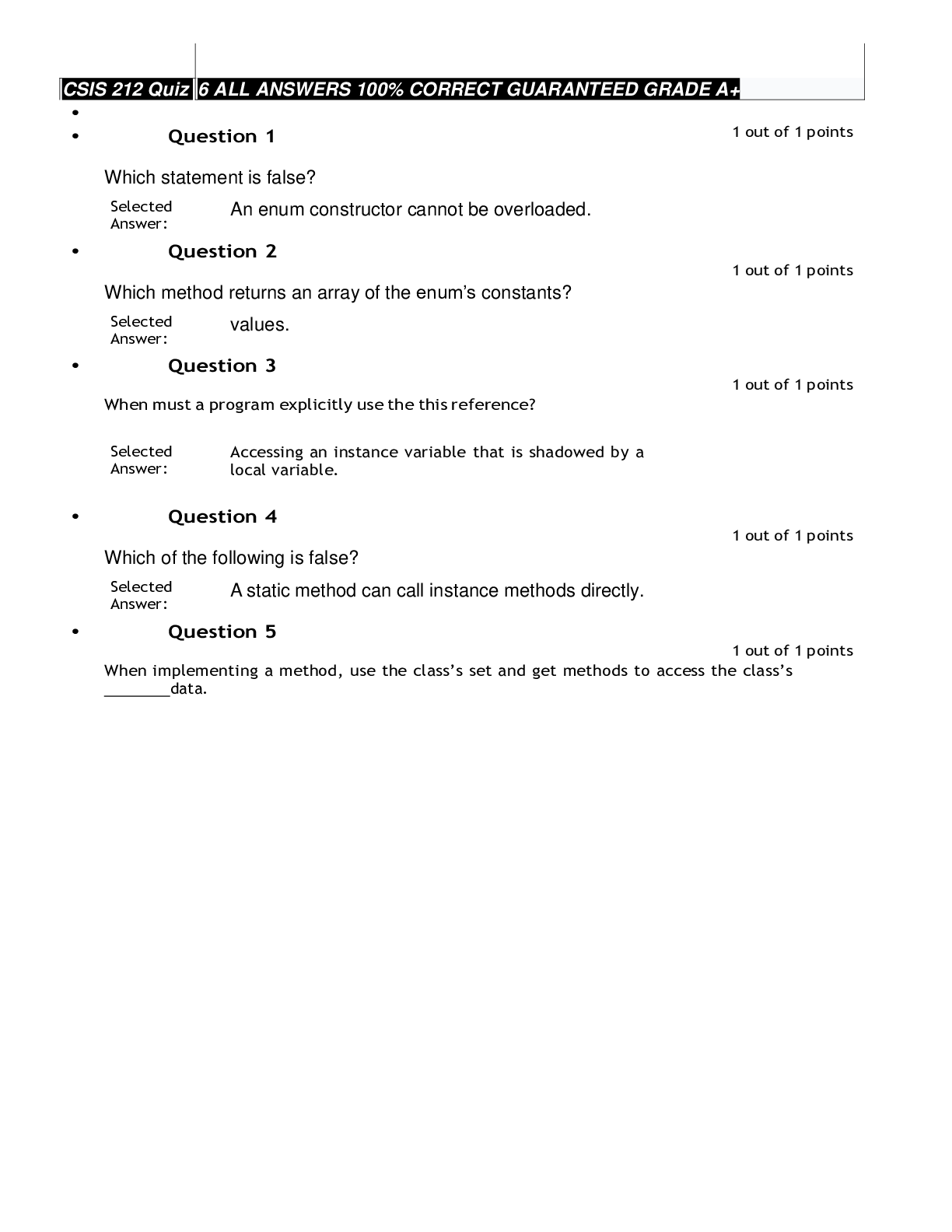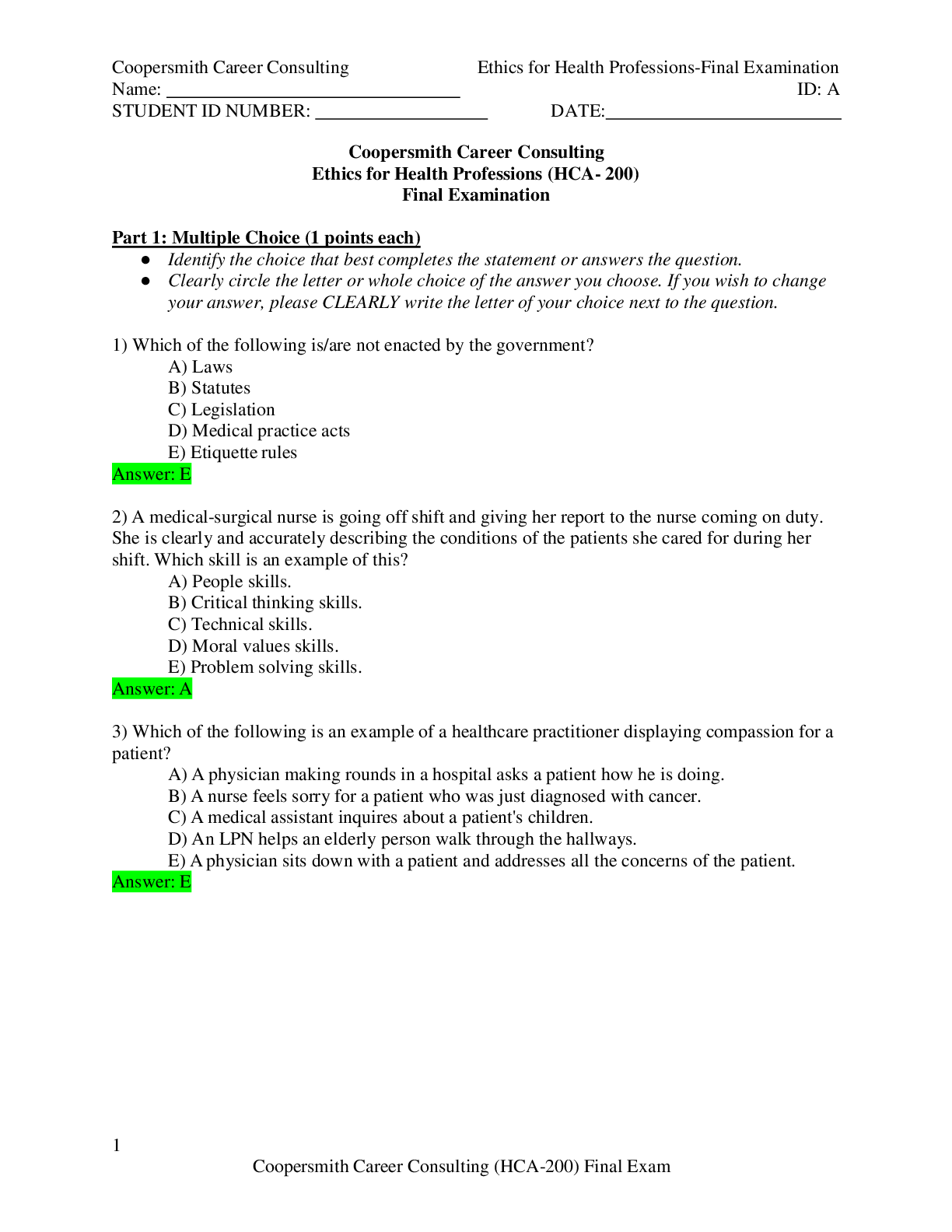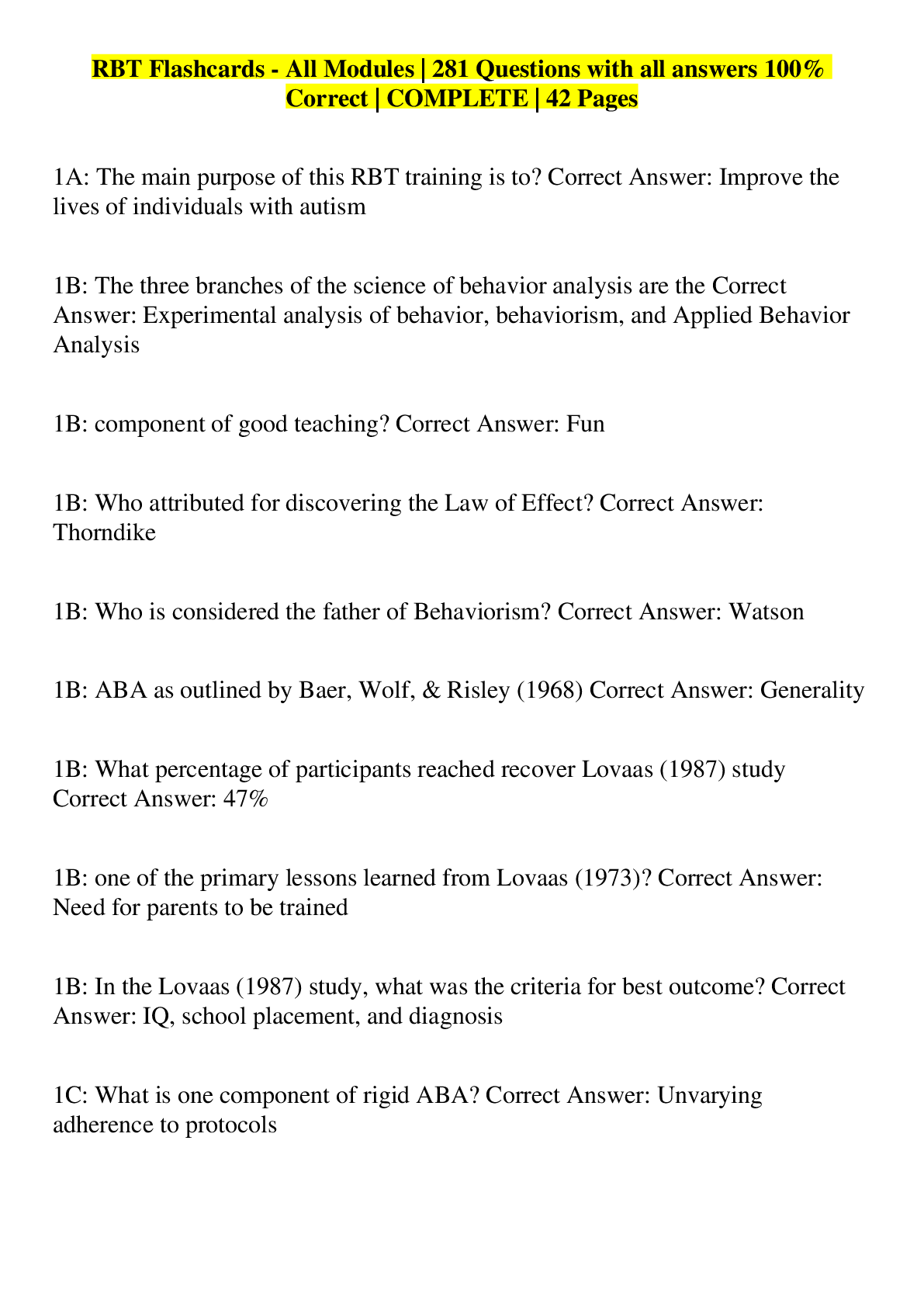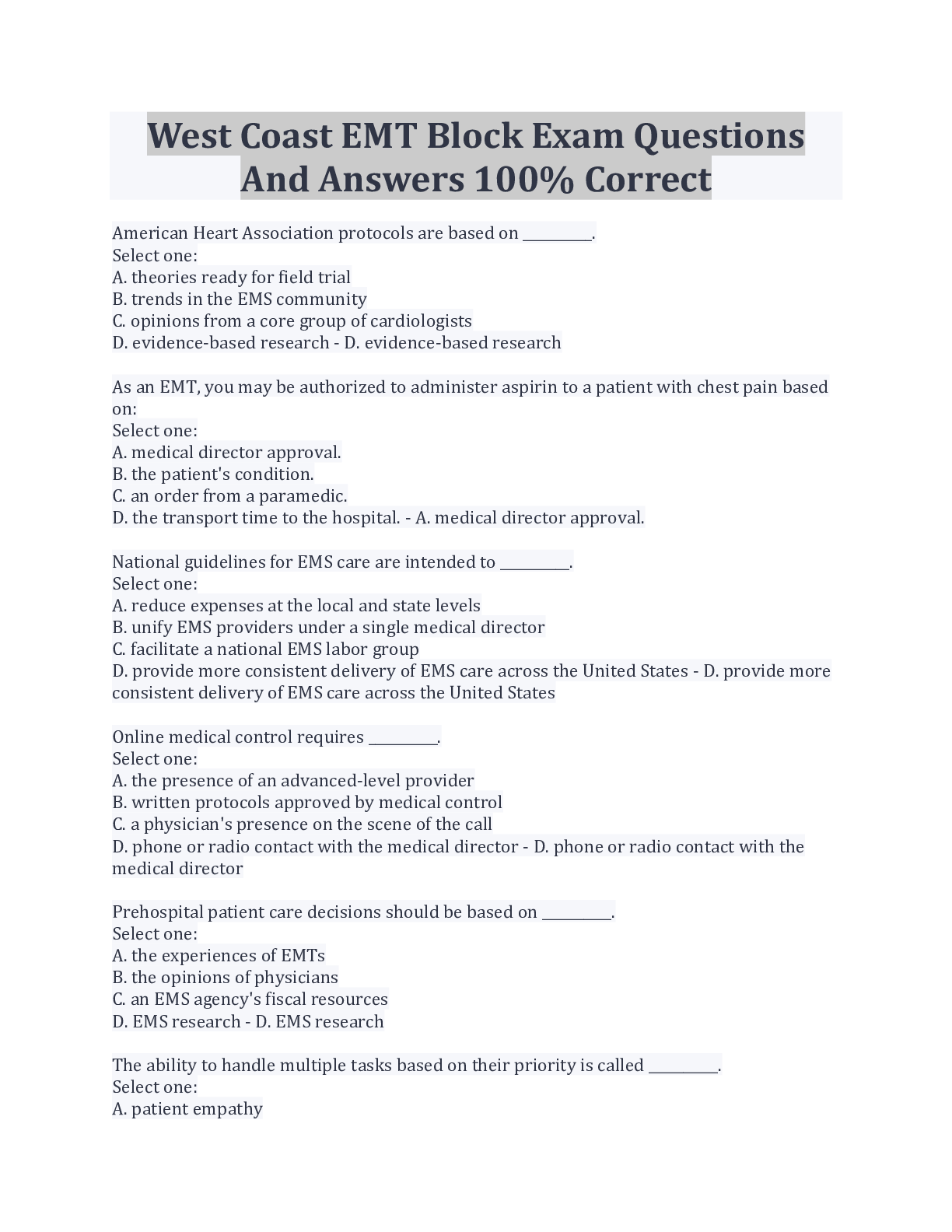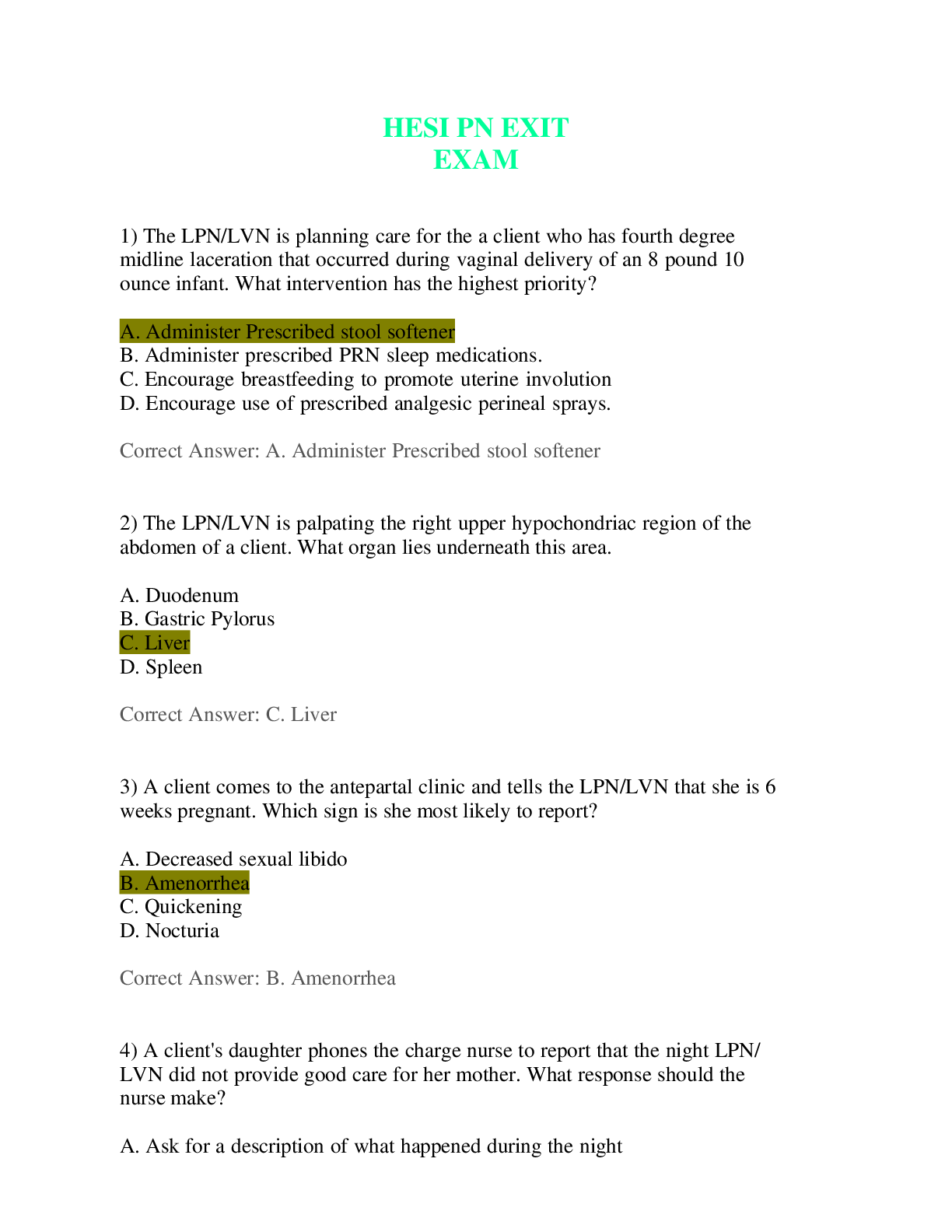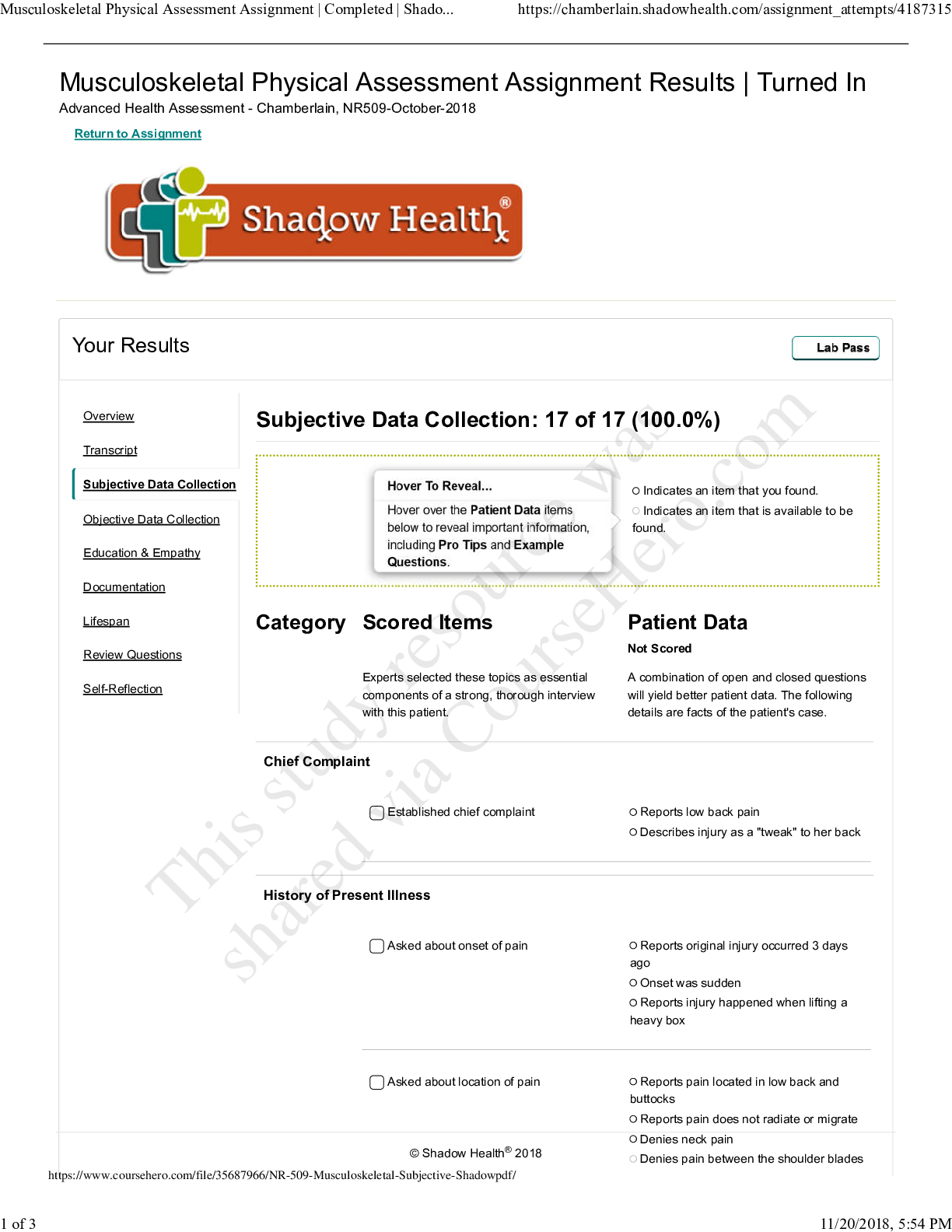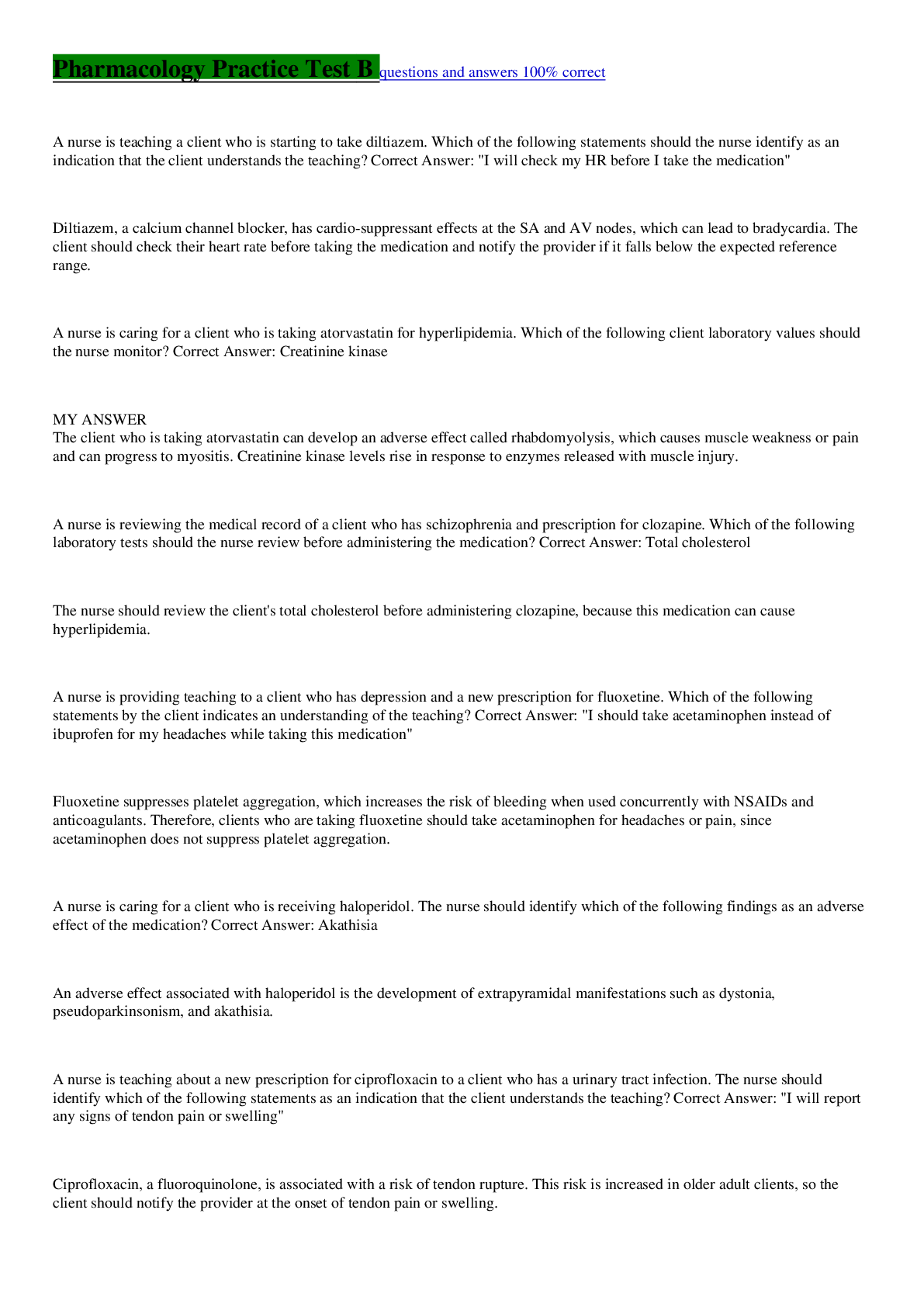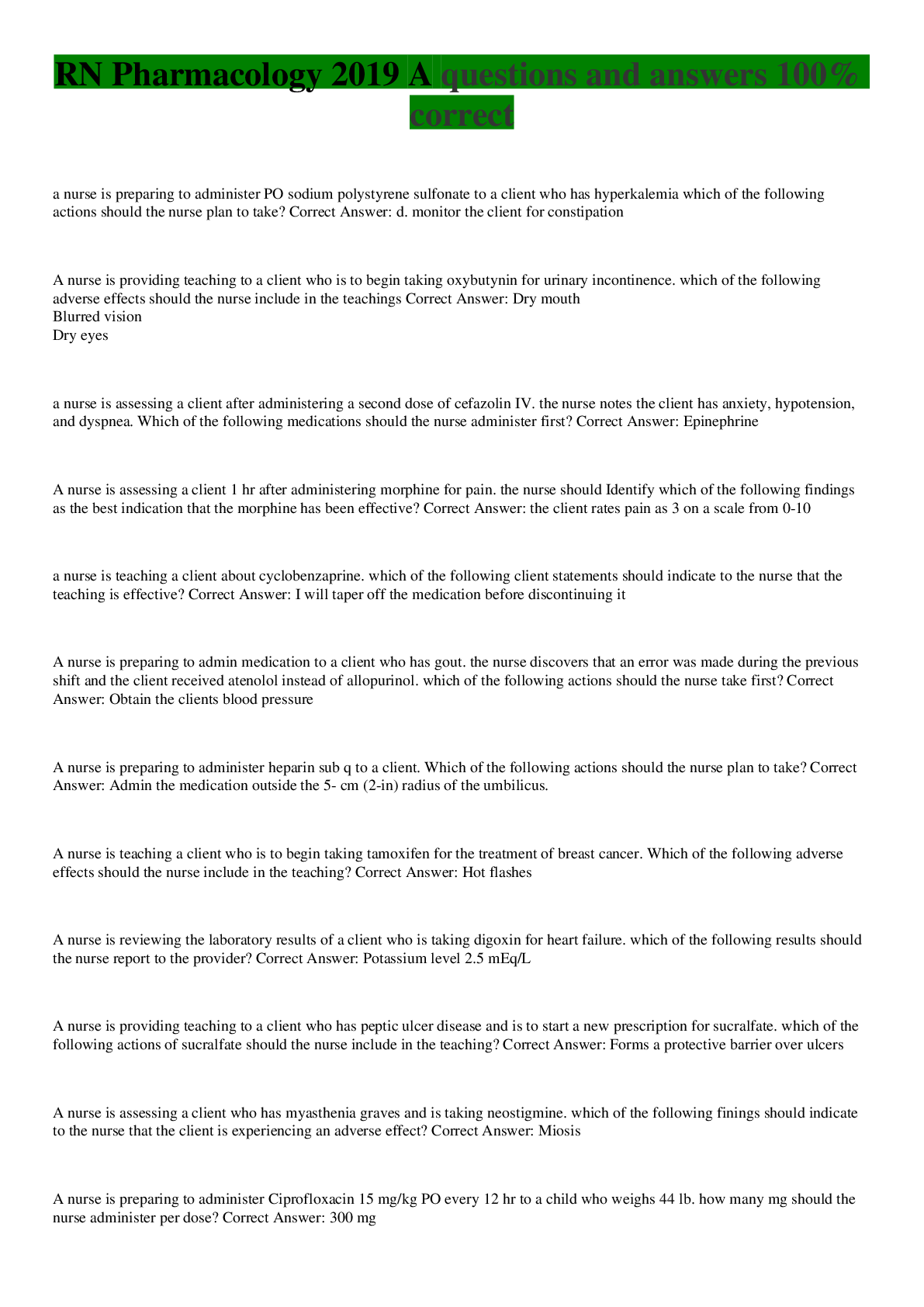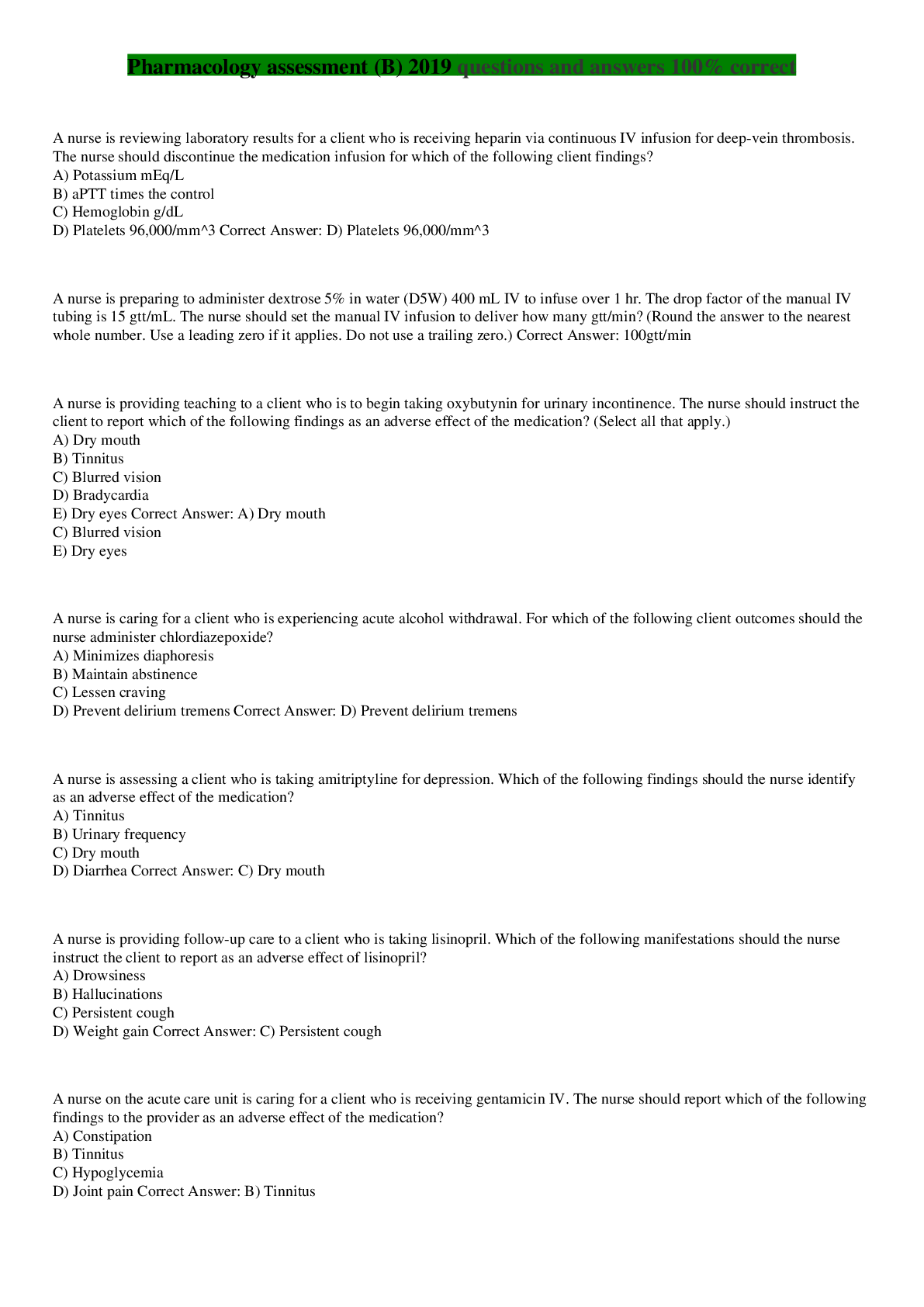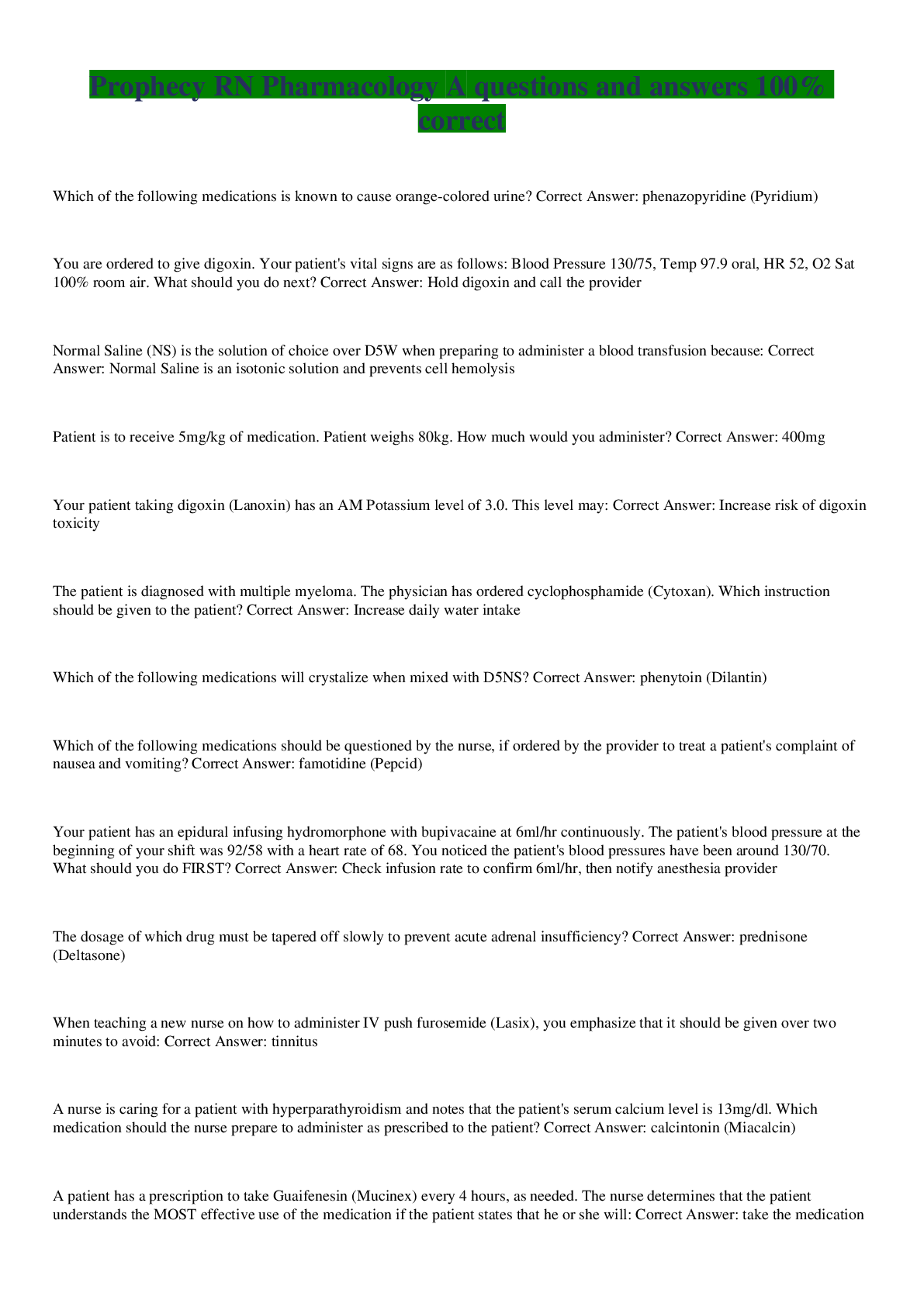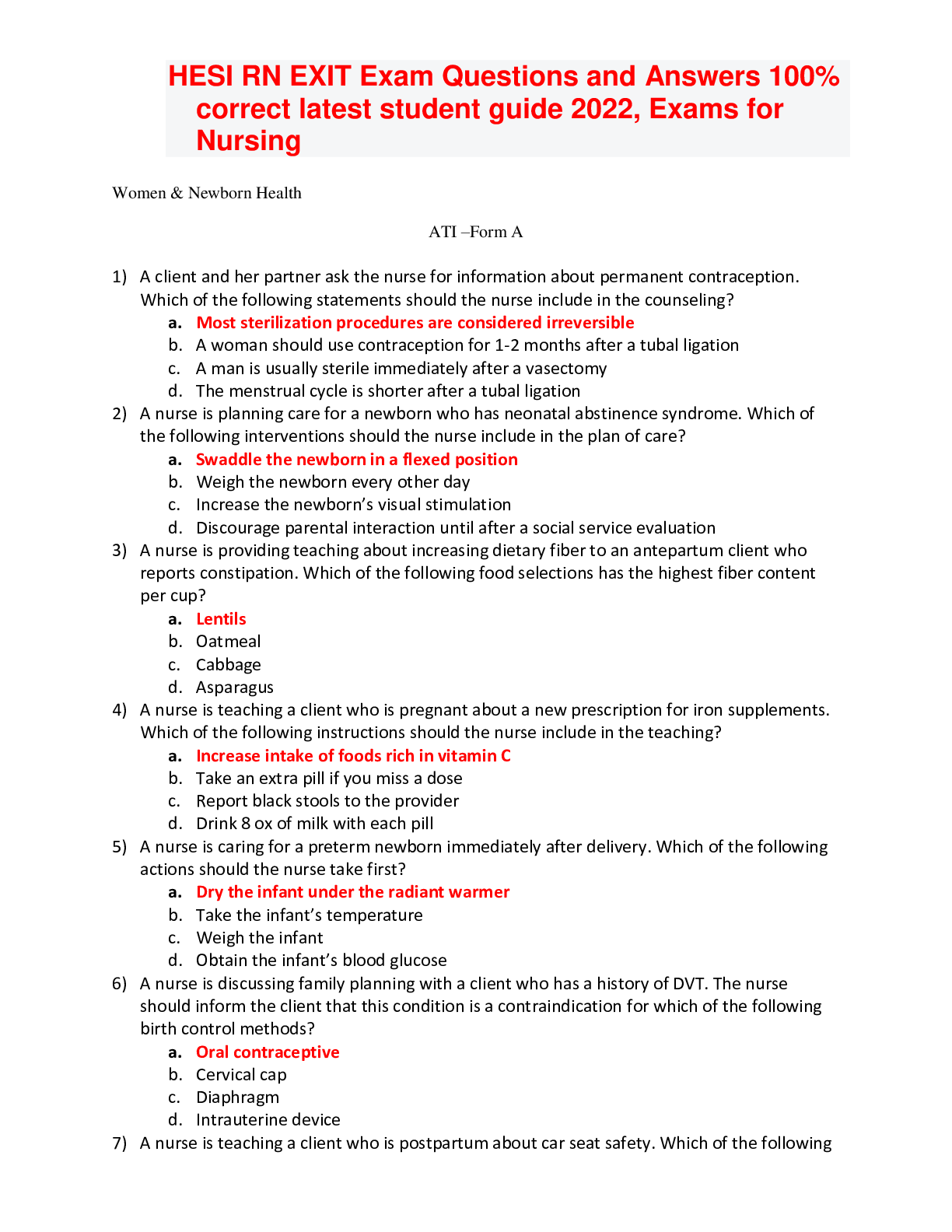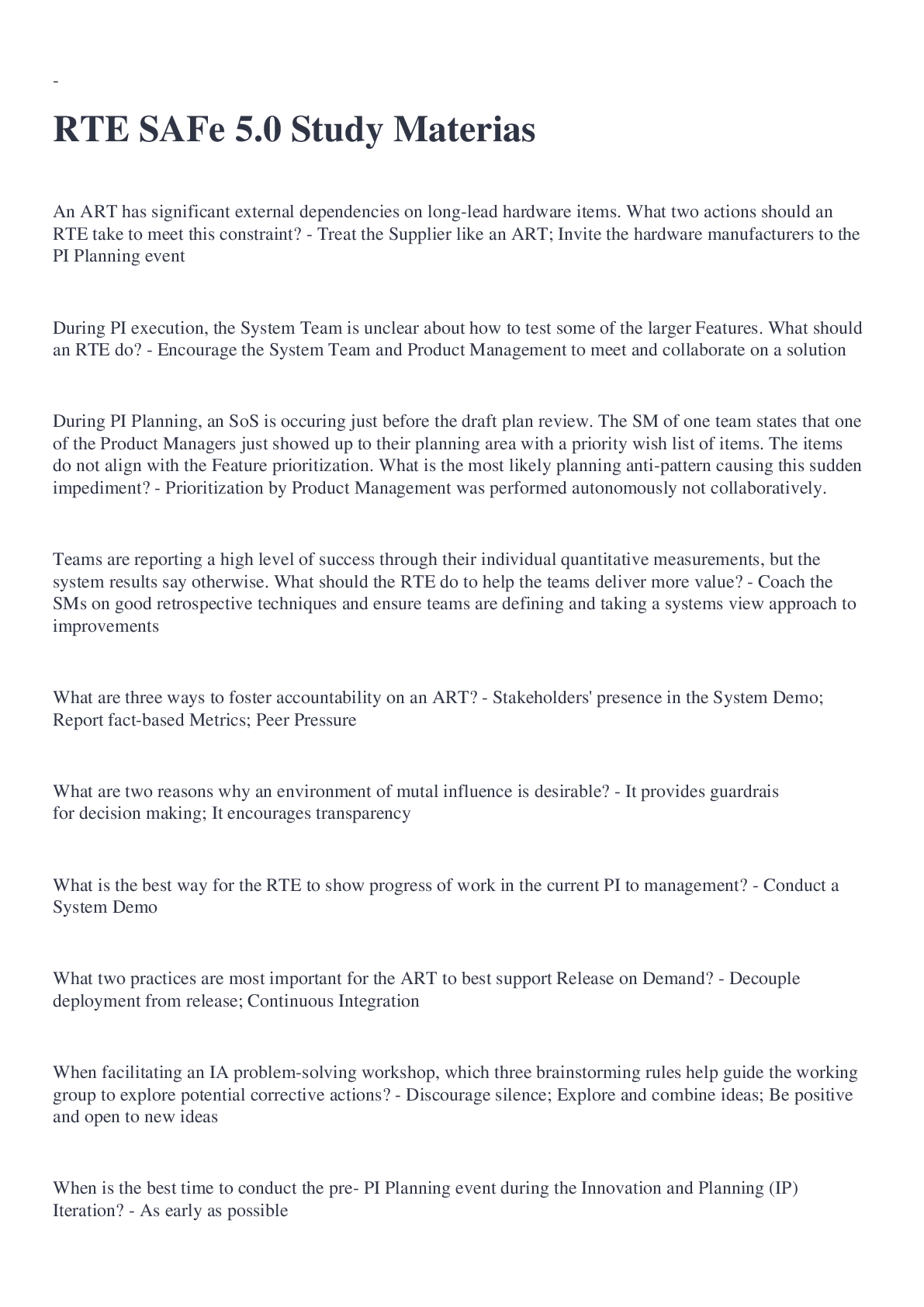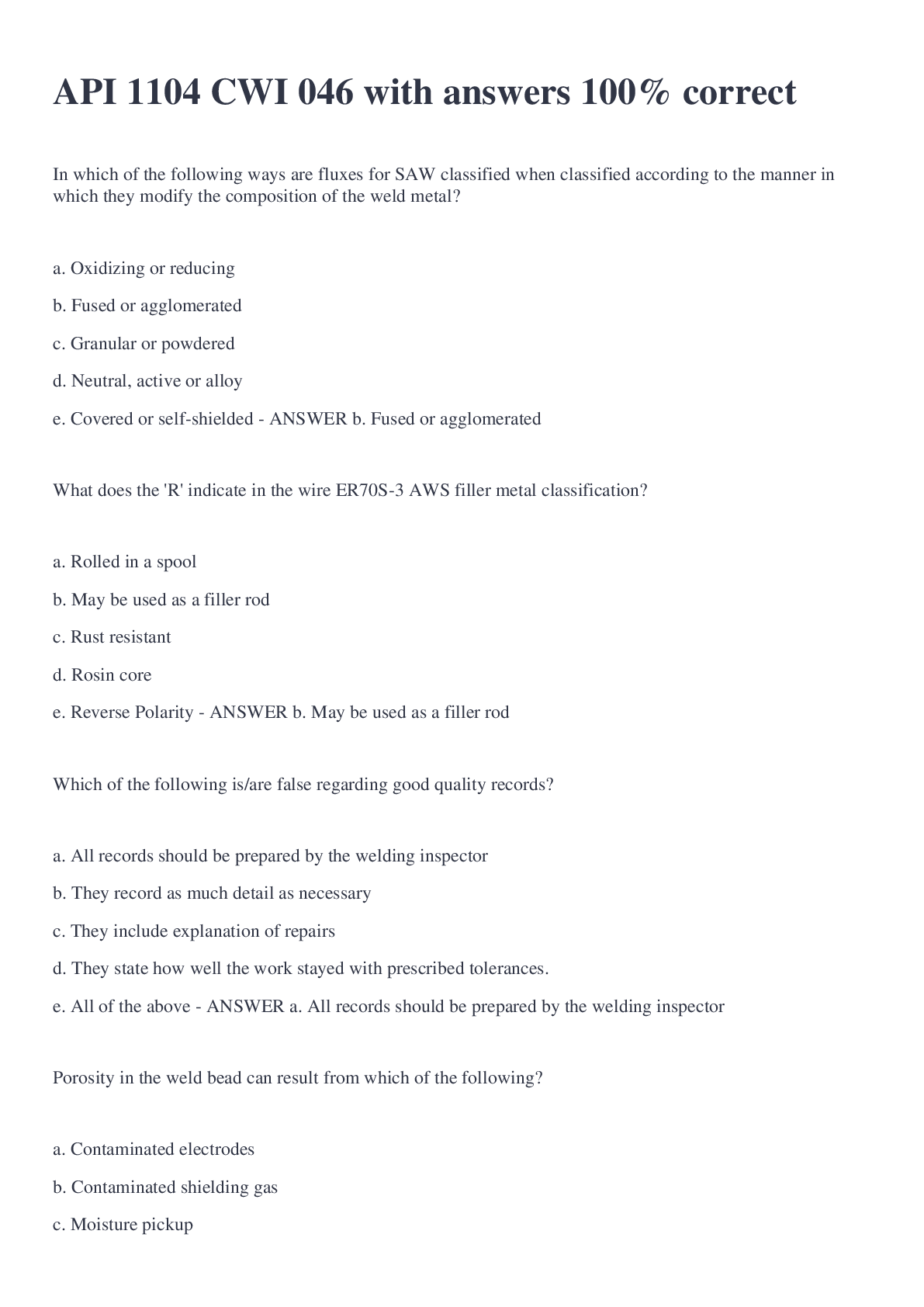Health Care > EXAM > OCN - Practice Tests ALL ANSWERS 100% CORRECT SPRING FALL-2022 LATEST EDITION RATED GRADE A+ (All)
OCN - Practice Tests ALL ANSWERS 100% CORRECT SPRING FALL-2022 LATEST EDITION RATED GRADE A+
Document Content and Description Below
A patient has the following laboratory values: white blood cell count 2100 mm3; neutrophils, segmented 23%; neutrophils, band 6%; hemoglobin 8.9 g/dl; and, platelets 100,000 mm 3. The nurse's initial ... patient teaching includes: A. washing hands frequently. B. using an electric razor. C. avoiding trauma. D. taking daily stool softeners. - A. washing hands frequently There are many nonpharmacologic interventions for the prevention of infection. Handwashing remains the single most important intervention to prevent infection. A patient is receiving the first dose of paclitaxel. The nurse should be prepared to treat the patient for: A. shaking chills. B. projectile vomiting. C. hypersensitivity reaction. D. urinary retention. - C. hypersensitivity reaction A side effect associated with paclitaxel is hypersensitivity reaction. Hypersensitivity is an exaggerated or inappropriate immune response that may be localized or systemic. Pretreatment to prevent the reaction includes administering cimetidine, diphenhydramine, and if not contraindicated, dexamethasone. A patient who completed treatment for malignant melanoma one year ago complains of still feeling tired. The nurse anticipates an order for: A. darbepoetin. B. methylphenidate. C. lorazepam. D. pegfilgrastim. - B. methylphenidate Psychostimulants such as methylphenidate have been tested in certain populations including patients with malignant melanoma as well as in patients with advanced cancer. Patients reported improvement in symptoms of cancer-related fatigue with the use of methylphenidate but it remains an area where more research is needed. A patient receiving 10 mg of sustained-release oxycodone every 12 hours requires 5 mg of immediate-release oxycodone five to six times daily. The best adjustment in the pain medication regimen is to request an order for: A. 5 mg of immediate-release oxycodone every 3 hours. B. 10 mg of immediate-release oxycodone every 6 hours. C. 10 mg of sustained-release oxycodone every 8 hours. D. 30 mg of sustained-release oxycodone every 12 hours. - D. 30 mg of sustained-release oxycodone every 12 hours The first sign that an increase in opioid dose is needed is a decrease in the duration of analgesia for a given opioid dose. Patients may report the need for an increased number of rescue doses. Sustained release doses plus immediate-release (rescue) doses should be calculated. When slight improvement in analgesia is needed, a 25% increase in opioid dose may be sufficient; for a moderate improvement, 50%; and for a strong effect, 100% increase may be needed. A patient with prostate cancer is taking oxycodone orally every four hours as needed for pain. At a home visit, the nurse learns the patient is experiencing constant, dull back pain and he has not moved his bowels for three days. These symptoms most likely indicate: A. ascites. B. hypercalcemia. C. impending spinal cord compression. D. an adverse effect of the oxycodone. - C. impending spinal cord compression Spinal cord compression may result from tumor invasion into the vertebrae causing a collapse on the spinal cord. Patients at high risk for cord compression include those with prostate cancer. Dull back pain is an early symptom of spinal cord compression. Which terms are associated with malignant tumors originating in the epithelial tissue? A. Osteo and chondra B. Lympho and myelo C. Adeno and squamous D. Lipo and rhabdo - C. Adeno and squamous Tumors are classified by the tissue of origin. The malignancies that arise from the epithelium are squamous cell, adenocarcinoma, basal cell, and choriocarcinoma. The severe pain associated with post-herpetic neuropathy is most effectively treated by: A. propoxyphene. B. hydromorphone. C. amitriptyline. D. extra-strength acetaminophen. - C. amitriptyline. Pain associated with herpes zoster is severe and can be debilitating. The pain is described as continuous, deep and burning. Opioids are used to treat acute herpes zoster. Tricyclic antidepressants are used to treat post-herpetic neuralgia. An oncology nurse teaching a cancer biology class explains that a proto-oncogene's role is to: A. stimulate angiogenesis. B. cause apoptosis. C. inhibit tumor growth. D. promote cell division. - D. promote cell division Proto-oncogenes promote the specialization and division of normal cells. A change in a proto-oncogenes genetic sequence can result in uncontrolled cell growth, ultimately causing the formation of a cancerous tumor. Proto-oncogenes can be transformed into oncogenes in three ways: point mutation (alteration of a single nucleotide base pair), translocation (in which a segment of the chromosome breaks off and attaches to another chromosome), or amplification (increase in the number of copies of the proto-oncogene). Which of the following statements by a patient most likely indicates the need for further education about preventing infection? A. I need to be very diligent about washing my hands after working in the garden. B. I do not want to get an influenza shot until all my chemotherapy is finished. C. I keep my wound dressing supplies in a closed storage container. D. I will not permit my grandchildren to visit me if they are sick. - B. I do not want to get an influenza shot until all my chemotherapy is finished Because a percentage of patients will achieve protection from the influenza vaccination and the risks for adverse effects are low, all patients with cancer and their household contacts should receive annual vaccination. NCCN recommends vaccination at least two weeks prior to cytotoxic or immunosuppressive. If this is not possible, patients can be vaccinated during treatment and revaccinated at least three months after therapy. A 69-year-old patient who received chemotherapy seven days ago calls the nurse to report a temperature of 101°F (38.3°C) and lightheadedness. The nurse determines the patient is dyspneic and diaphoretic. The nurse's initial response is to instruct the patient to: A. take acetaminophen. B. recheck his temperature in two hours. C. report to the emergency department. D. call for an ambulance. - D. call for an ambulance. The time at which chemotherapy exerts its maximum effect on the bone marrow and the white blood count reaches its lowest point is the nadir. This usually occurs within 7 to 10 days after administration. Patients are most susceptible to infections at this time due to neutropenia. In a neutropenic patient, infection may rapidly progress to sepsis, a systemic inflammatory response to microorganisms in the blood. Early signs of sepsis include fever, chills, and tachypnea. Patients over the age of 65 are at greater risk. Untreated sepsis can result in septic shock and death. Immediate reporting of symptoms and medical management is necessary. A patient expresses anger about his diagnosis of cancer and the need to receive his first chemotherapy treatment. The nurse's best response is to: A. initiate a referral to a social worker. B. call the physician and ask for the treatment to be delayed. C. explain to the patient that the doctor ordered treatment to start today. D. suggest ways for the patient to participate in the treatment plan. - D. suggest ways for the patient to participate in the treatment plan. Loss of personal control is perceived as lacking the ability to control events that affect life style and goals. Both disease and treatment are considered risk factors for a loss of personal control. Personal control can be maintained through verbalization of feelings and participation in care. A patient with lymphoma reports persistent nausea, muscle cramps, weakness, and paresthesia of the fingers two days after receiving the first cycle of chemotherapy. The patient most likely is experiencing: A. hypercalcemia. B. tumor lysis syndrome. C. disseminated intravasular coagulation. D. syndrome of inappropriate antidiuretic hormone secretion. - B. tumor lysis syndrome Tumor lysis syndrome involves a metabolic imbalance that occurs with the rapid release of intracellular potassium, phosphorus, and nucleic acid into the blood as a result of tumor cell kill. Early signs and symptoms of tumor lysis syndrome include the following: muscle cramps, weakness, nausea and vomiting, diarrhea, lethargy, and paresthesia. During the initial evaluation of a patient, the treatment plan is outlined and includes amputation of the right leg. The patient begins to scream and cry, stating, "But I have small children. I need to be able to run, walk, and play with them." The nurse's best response is: A. It sounds like you fear your treatment plan, tell me what you know about it. B. Many patients feel better after they are fitted with a prosthesis. C. If you do not receive the amputation, your chance of dy [Show More]
Last updated: 1 year ago
Preview 1 out of 21 pages
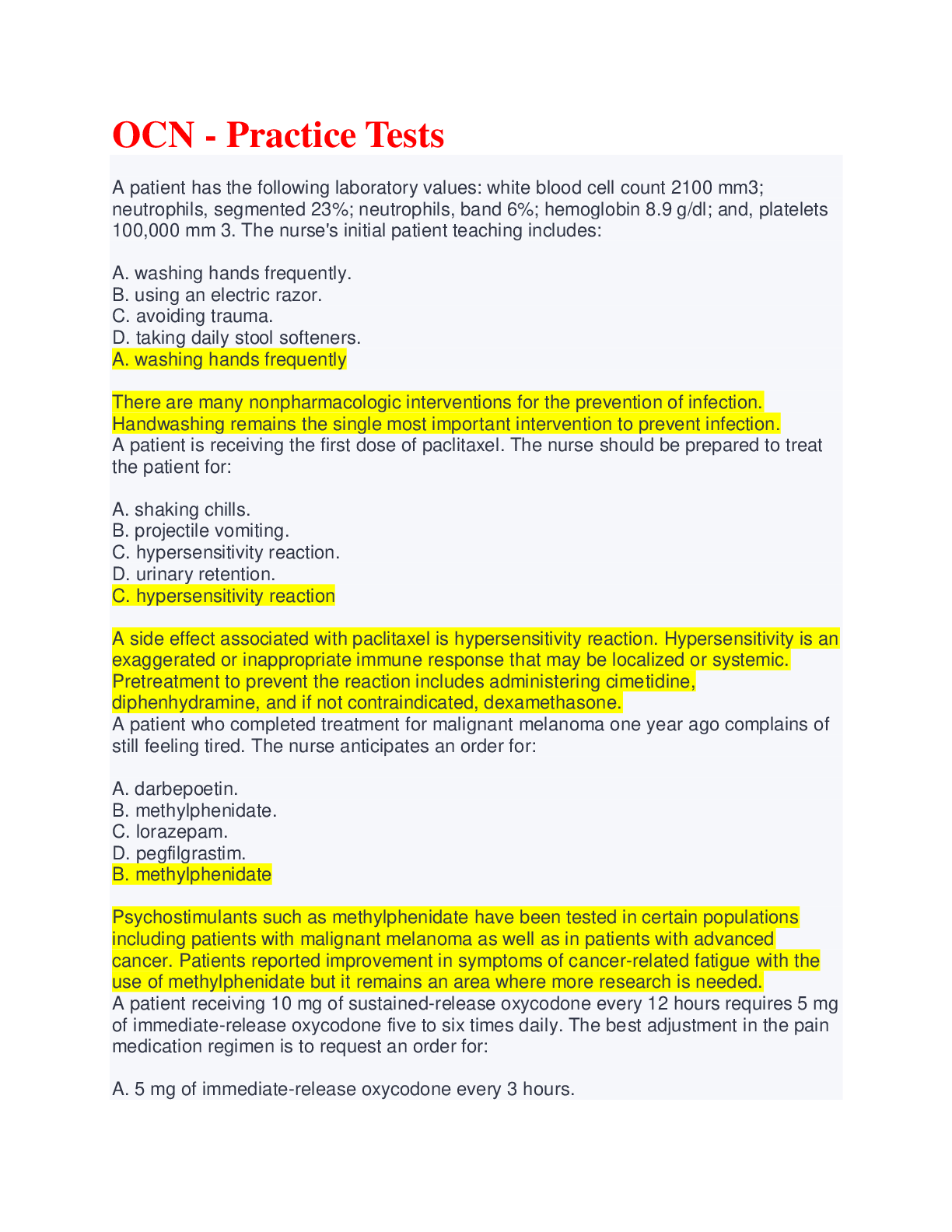
Reviews( 0 )
Document information
Connected school, study & course
About the document
Uploaded On
Aug 25, 2022
Number of pages
21
Written in
Additional information
This document has been written for:
Uploaded
Aug 25, 2022
Downloads
0
Views
44



